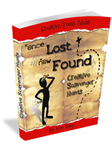Scavenger hunts are a wonderful way to spend time with your family. They are not only fun, but they can also be great opportunities for children, youth and adults to learn important life lessons and life-skills. They are great as a stand alone event or as part of the entertainment for a party or holiday celebration. Depending on the rules, they can be highly competitive or encourage cooperation and teamwork toward a common goal. Scavenger hunts can help youth learn or test their common knowledge on subjects, improve navigation skills, enhance their problem solving ability, and provide a great many other benefits and educational opportunities.
Types of Family Scavenger Hunts
When deciding what you want to do for a youth scavenger hunt the first thing you want to decide is what type of scavenger hunt you want. Scavenger hunts can involve looking for items or clues and can contain props and equipment like a compass and maps. There are also photo scavenger hunts, sound scavenger hunts, video hunts, “amazing race” type hunts, and many more variations.
Treasure Hunts for the Family
One of the most popular types of scavenger hunts for youth happens to be those which use detailed maps and in which simple clues are used to find special locations. Sometimes the clues will lead you to items at the location that either are clues themselves or have clues stuck to them. Sometimes challenges will be included at some of those locations before they can receive the clue leading to the next location. Prizes can also be awarded in scavenger hunts in order to keep the interest of the participants, and keep them motivated. Prizes can include: Gift Cards, Movie Tickets, and themed gift baskets.
Setting up a “Pirate Treasure Hunt” for your Family
Here’s a simplified example of a treasure hunt using a “Pirate’s Treasure Hunt” theme. Start with a pirate map letting everyone know the boundaries of the hunt. In this example, the youth’s house is the primary location for the scavenger hunt. You will need a compass for each team of youth because compasses are what pirates used. Use descriptive language and a little creativity to bring your maps alive. The bathtub and mirror becomes a “mirrored lake” or “mirrored sea.” The hall becomes the “middle passage”. A door or window is described as a “portal.” Any place with plants becomes a “garden.” The closet becomes the “stores.” A shoe closet becomes the “foot locker.” You can also include the “North room”, a “central chamber,” “the Den”, “Next to the Sleeping Princess” and others.
Clues for a “Pirate Treasure Hunt”
First Clue: Fill your bath tub with a little water, and put a toy boat floating in the water. If you have a shower curtain, pull the shower curtain shut so that the boat is concealed. Place a clue on the wall behind the shower curtain which will be concealed unless someone opens the shower curtain to find the next clue. The hint leading to this ship should be: Find a pirate ship sailing in water or in more descriptive and thematic terms “Find the pirate ship sailing upon the mirrored sea.”
Second clue: On the wall behind the shower curtain you will to put something like: “Head west 6 feet then make your way north to the rocky road.” (This would lead the youth outside the home) “Then continue to the Green Parrot’s waterfall.”
Third Clue: The waterfall would be near a rock by a fountain outside, which is also used as a bird bath. The next clue would be something like “travel 6 feet west and through the portal to find the sea.” “When you find the sea, walk north until you hit the dead end.” This would then lead the hunters back into my home to a picture which has dolphins on my wall. When you head north you will walk directly into a broom closet.
Putting It All Together
Of course there could be many more clues and the clues could be much more difficult. Sometimes riddles are also used to make the scavenger hunt even more difficult. But in this simple example, you can imagine how much fun the youth can have as they are forced to work together and decipher the meaning of the clues.
With a little imagination, creating scavenger hunts for youth can be almost as much fun as playing them. If you are interested in creating one of these scavenger hunts cheek out my eBook below for a variety of ideas, themes and even riddles to help you get started.

Creative Scavenger Hunts: Once Lost, Now Found
is a 160 page e-book that explains everything you need to know to easily plan your very own scavenger hunt: Item Lists, Rules, Riddles, Safety Tips, Guidelines, Scoring, Tips for Facilitators and MORE! There are more than 50 complete ideas (scavenger hunts, photo hunts, video hunts, amazing race, etc.) to use at home, around the neighborhood, at the mall, in the park, on the beach, at church, and around town!
=> Tell me more about the Creative Scavenger Hunts
